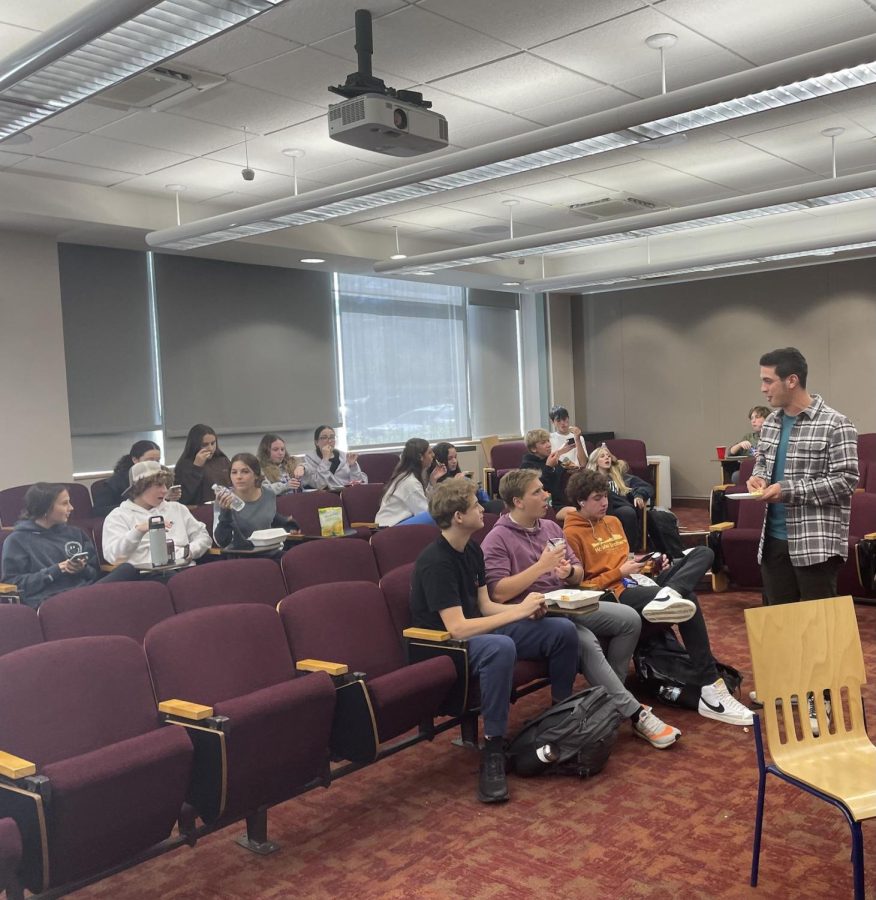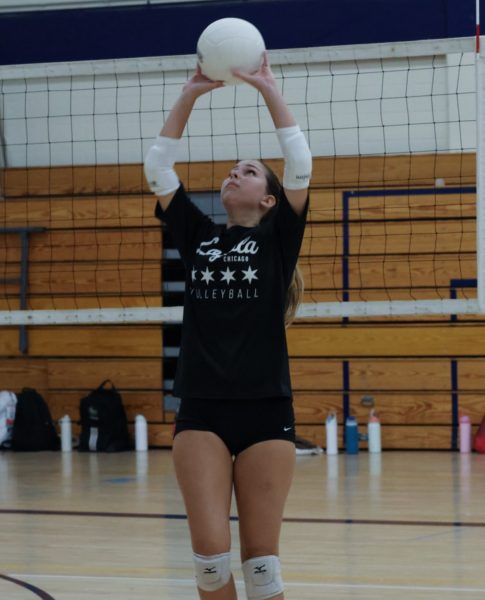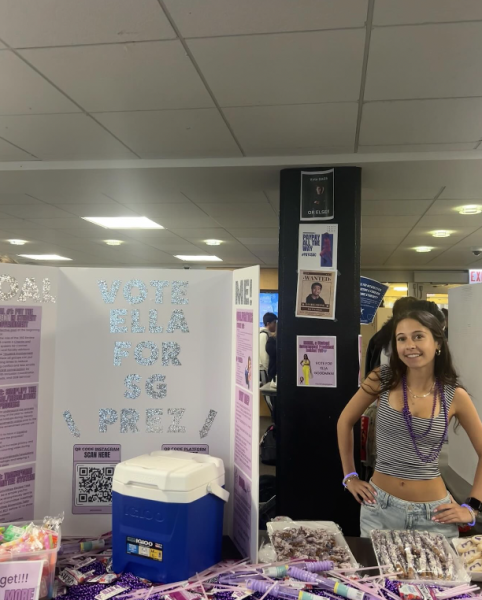Affinity Abloom
Parker’s cultural groups grow in involvement
Photo credit: Benjamin Kagan
Members of the Jewish Student Connection celebrate the Jewish holiday of Rosh Hashanah.
“You know how when you were younger and you were scared of something?” sophomore Libi Horn said. “Maybe you had a fear, or you had a nightmare. Your parents always say to talk about it and it’ll make you less scared.” She believes that this is what Parker affinity groups achieve. “Affinity groups are like a place of reflection – a safe place of reflection.”
This year, students introduced four new affinity groups to the roster of student organizations – MRA (Multi-Racial Affinity), JSC (Jewish Student Connection), WAG (Women’s Affinity Group), and SASA (South Asian Student Alliance). Before this year, there were eight affinity groups operating within Parker’s upper school – Asian Alliance, Pride, BSU (Black Student Union), MOCHA (Men of Color Heritage Affinity), WOCA (Women of Color Affinity), SOCA (Students of Color Affinity) MSA (Muslim Student Association), and OLAS (Organization of Latin American Students).
P.E. teacher Terry Davis is a head of SOCA and heavily involved in Parker’s DEIB (Diversity, Equity, Inclusion, and Belonging) programming. “Currently, I’m impressed with what I’m seeing in terms of identification with affinity spaces,” Davis said. “We are giving students the chance to show leadership skills. We’re giving students the chance to connect with people that are like them. We’re giving students the chance to feel more comfortable moving around the space.”
Compared to a few years ago, Parker’s affinity groups have progressed, in terms of both number and significance among students. “We’re in a really good place in terms of affinity groups providing opportunities that support our students,” Upper School Dean Joe Bruno said. A part of Bruno’s job is approving the creation of student organizations. The first step in creating a student organization is to fill out the student organization club charter. It asks for information such as the intention of the group, the financial details, and who is involved in the leadership. The heads of the group then meet with Bruno. “I would say that 99 percent of them are absolutely approved right off the bat,” he said.
When creating an affinity group, it is important for students to identify a need for that space within the school. Davis believes that since affinity groups are meant to serve the students, they are the ones who should be deciding on what that need is. “I can’t speak on the need of each affinity space. All I can do is help provide the space,” Davis said.
Horn is one of three heads of WAG, which was founded this year. She described how she and the other heads wanted a space in which women can come together and talk about their experiences. “We wanted a more inclusive space that was for all women, no matter what your race or sexuality is, just to talk about problems that we’ve had together,” Horn said. “The main thing that’s important when the club is created is that there is an intention behind why the club is created,” sophomore Maddy Young said. As one of the heads of Asian Alliance, Young works hard to “make its members feel safe and comfortable.”
However, many students struggle to identify the intention behind some affinity groups. Some students question what issues these groups are trying to address and how – even if – they will take action on behalf of these issues. An anonymous junior has concerns as to “whether [affinity groups] are actually going to make change or are there just to boost up a resume,” they said. “I feel like people are taking their differences and electrifying them and just creating clubs for the heck of a college application.” An anonymous sophomore holds a similar view. “I feel as though a lot of them are aiming to do the same thing and people are doing it for college,” they said. “They should be a community for something that needs a community.”
Much of the Parker community finds great value in affinity spaces. Senior Payton Pitts is a head of both BSU and MOCHA. Last year, BSU presented at MX about what it’s like to navigate this school and this world as a Black person. “It opened a lot of eyes and made more students and faculty cognizant of what’s going on in the school and how words and actions can affect other people,” Pitts said.
Bruno has noticed how when a club is first created, the excitement and morale around the club is very high but begins to taper as the year goes on. But with Affinity groups, it’s different. Bruno said, “once students gather, they understand and see the importance of it. Once it gets going, it sticks.”













